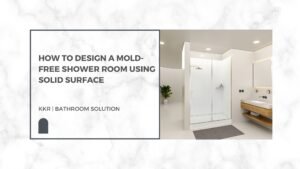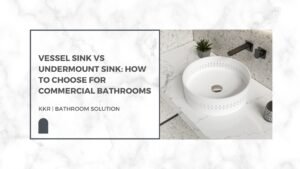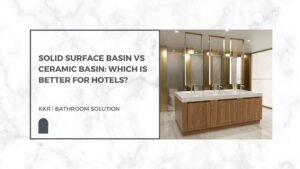When developers, contractors, or hotel operators invest in bathroom fixtures, the purchase price is only one part of the equation. The real measure of value lies in the total cost of ownership (TCO) — the combination of purchase, installation, maintenance, repair, and replacement costs over time.
For solid surface basins, the long-term economics are especially favorable. Although the initial investment may be higher than ceramic or stainless-steel sinks, their durability, repairability, and low maintenance costs make them a cost-effective solution over a 10-year lifecycle.
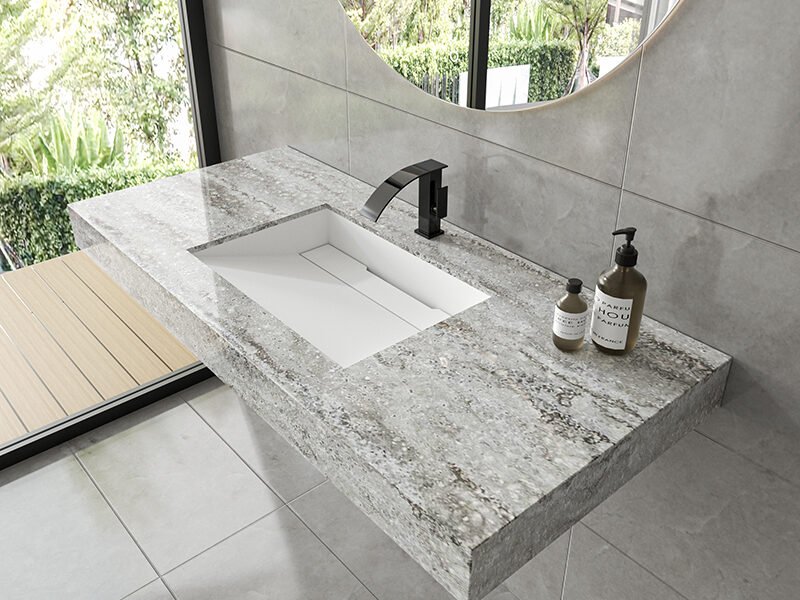

Understanding Total Cost of Ownership (TCO)
TCO is a comprehensive financial model used in large-scale projects to evaluate a product’s cost efficiency beyond its sticker price. It considers:
- Initial purchase and installation
- Daily maintenance and cleaning
- Repair and refurbishment
- Replacement and disposal costs
For high-traffic or hospitality environments — such as hotels, airports, and residential developments — a lower long-term maintenance cost often translates to major savings.
Comparing Upfront vs. Long-Term Costs
| Material | Average Initial Cost | Maintenance Frequency | Expected Lifespan | 10-Year Maintenance Cost | TCO Estimate (10 Years) |
|---|---|---|---|---|---|
| Solid Surface Basin | $$$ | Low | 15–20 years | $ | $$$ |
| Ceramic Basin | $$ | Moderate | 10–12 years | $$ | $$$ |
| Natural Stone Basin | $$$$ | High | 8–10 years | $$$ | $$$$ |
| Stainless Steel Basin | $$ | Moderate | 10–15 years | $$ | $$$ |
While solid surface basins have a slightly higher initial cost, they save money over time through lower maintenance, fewer replacements, and minimal downtime.
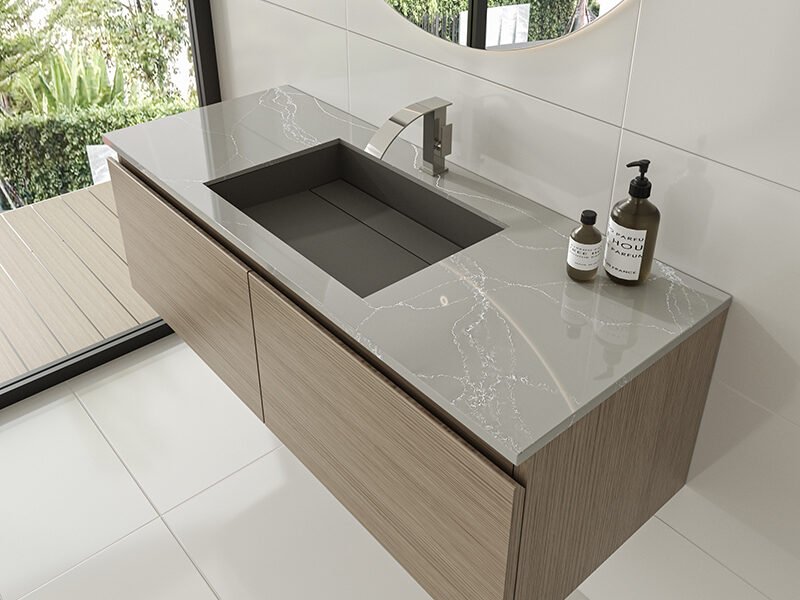

Key Advantages Affecting Long-Term Cost
1. Durability and Impact Resistance
Solid surface materials resist chipping and cracking better than ceramic, reducing repair and replacement costs.
2. Easy Surface Restoration
Minor scratches and stains can be polished out using sandpaper or refinishing kits — no need for full replacement.
3. Non-Porous and Mold Resistant
The non-porous surface prevents bacteria and mold, reducing the need for chemical cleaning agents and saving on labor costs.
4. Low Maintenance Cleaning
Simple daily cleaning with mild soap and water is enough. This cuts down on chemical use, maintenance time, and supply costs.
5. Design Longevity
Solid surface basins maintain their aesthetic appeal for years without fading, which helps hotels and residential properties avoid early renovation costs.
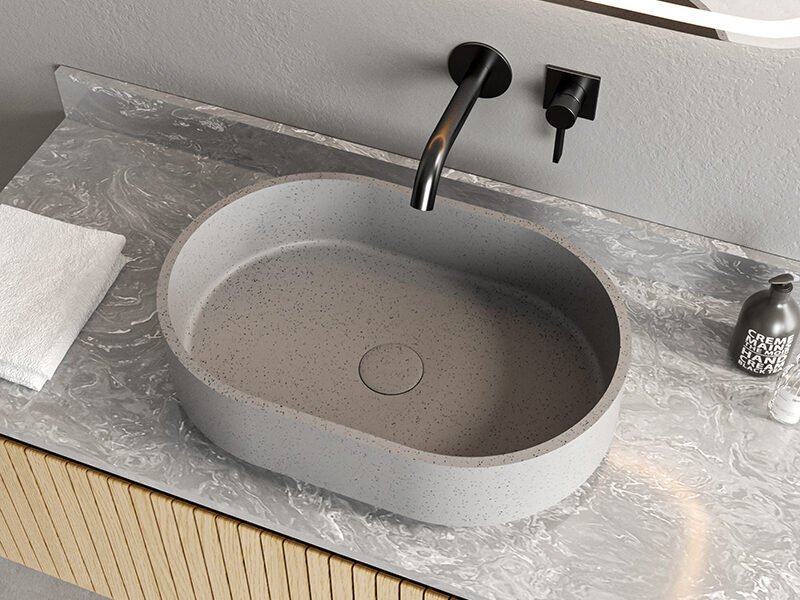

Real-World Applications: Why Hospitality Projects Prefer Solid Surface
Hotel bathrooms are among the most demanding environments for fixtures — constant guest turnover, cleaning chemicals, and water exposure test the limits of any material.
Solid surface basins prove their value by:
- Withstanding daily cleaning cycles without damage.
- Remaining mold-free in humid conditions.
- Allowing easy on-site restoration, eliminating the need for replacement.
- Keeping consistent design aesthetics across multiple properties or renovations.
KKR® has supplied over 2,000 hotel projects worldwide, where solid surface basins have demonstrated excellent long-term performance in luxury environments such as Hilton, Marriott, and Pullman resorts.
Example: Cost Analysis for a Hotel with 200 Rooms
Let’s assume a 10-year period comparison between solid surface and ceramic basins:
| Factor | Solid Surface | Ceramic |
|---|---|---|
| Initial Unit Cost | $180 | $120 |
| Annual Maintenance | $10 | $25 |
| Repair Frequency | 1 every 10 years | 3 every 10 years |
| Replacement Rate | <5% | 20% |
| 10-Year Cost per Room | $280 | $445 |
| Savings | — | ≈37% lower with solid surface |
The difference becomes substantial at scale. For 200 rooms, this means over $33,000 in savings over 10 years.
Environmental and Sustainability Benefits
Another cost consideration is sustainability. Solid surface basins can be repaired and repolished instead of replaced, reducing waste and disposal costs. Many brands, including KKR®, use low-VOC resins and recyclable materials, aligning with green building certifications like LEED and BREEAM.
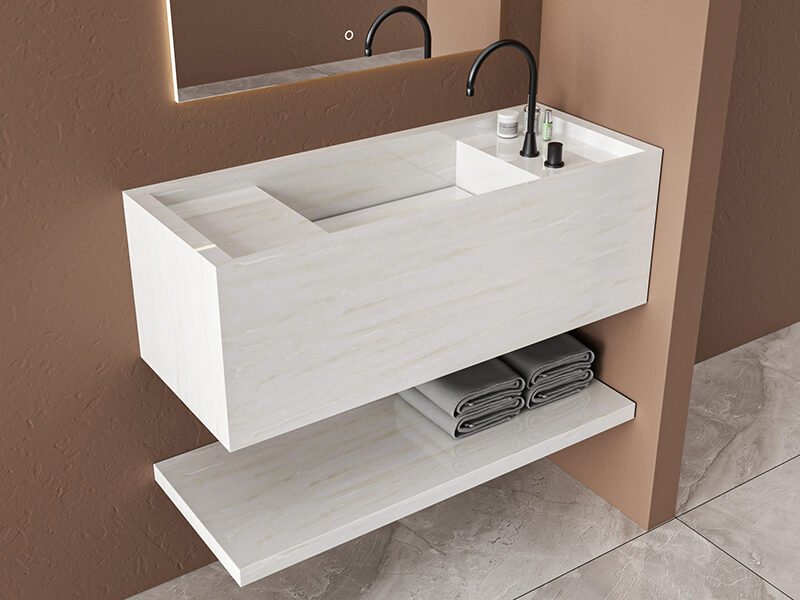

Long-Term Maintenance Tips
- Clean with neutral detergent or mild soap weekly.
- Avoid harsh chemicals (bleach, acetone).
- Polish minor scratches every 2–3 years.
- Inspect sealant joints annually to prevent water infiltration.
Proper care ensures your basin maintains its original look and performance for over a decade.
Conclusion
When you evaluate total cost of ownership, solid surface basins clearly outperform traditional materials. They last longer, require less maintenance, and retain their appearance far beyond the 10-year mark.
For developers and contractors, this translates into higher ROI and lower lifecycle costs.
With 25 years of manufacturing experience, KKR® continues to provide reliable, customizable solid surface solutions that combine design excellence with long-term value.
👉 Discover our full basin collection at www.kkrbath.com.
FAQ
Q1: Are solid surface basins worth the higher initial cost?
A: Yes. Their longer lifespan and low maintenance make them more cost-effective over 10 years than ceramic or stone alternatives.
Q2: Can scratches or stains affect performance?
A: No. Superficial scratches can be polished away, restoring the surface completely.
Q3: How long do solid surface basins last?
A: With proper maintenance, they typically last 15–20 years or more.
Q4: Is solid surface suitable for commercial or hotel bathrooms?
A: Absolutely. It’s widely used in hospitality and public projects due to its durability and hygiene.
Q5: How does solid surface compare environmentally to ceramic?
A: Solid surface basins produce less waste, last longer, and can often be refinished — making them more sustainable.
